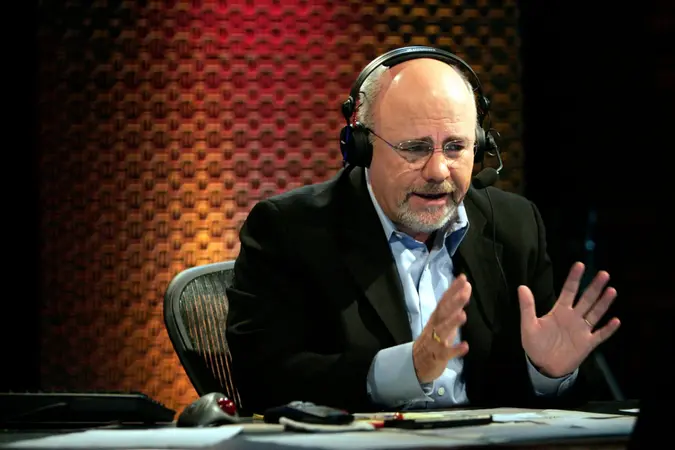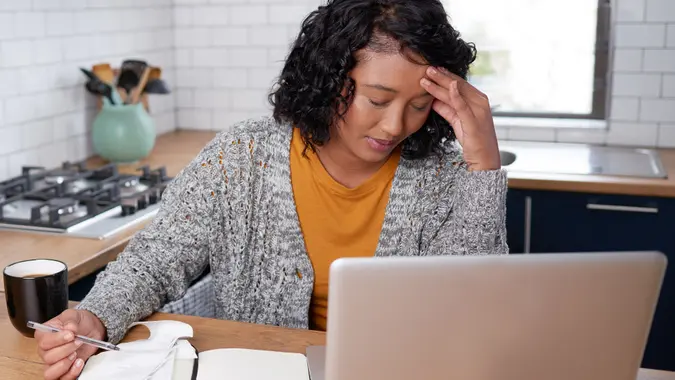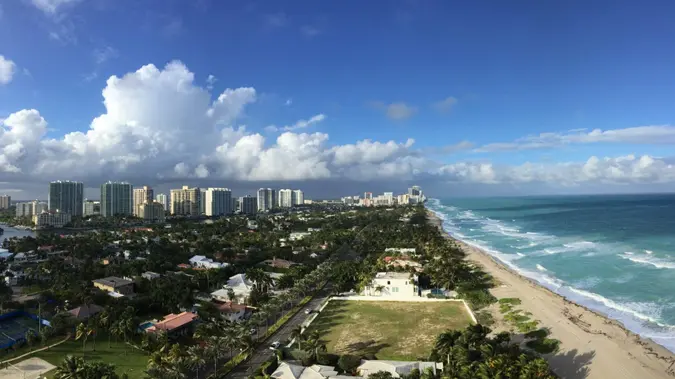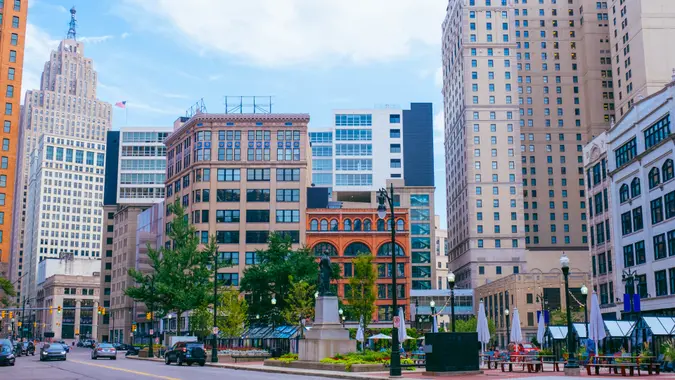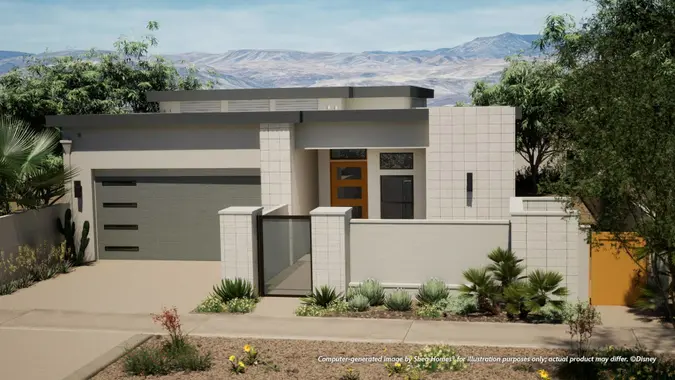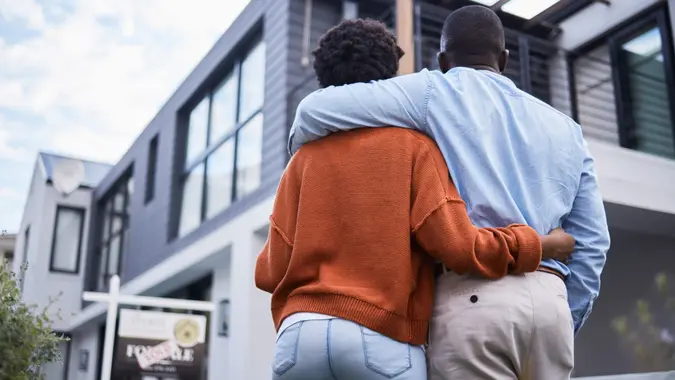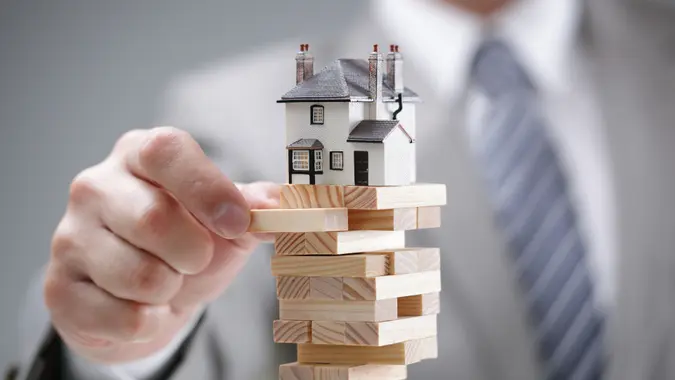What Is a Starter Home: Key Features and Costs to Know

Commitment to Our Readers
GOBankingRates' editorial team is committed to bringing you unbiased reviews and information. We use data-driven methodologies to evaluate financial products and services - our reviews and ratings are not influenced by advertisers. You can read more about our editorial guidelines and our products and services review methodology.

20 Years
Helping You Live Richer

Reviewed
by Experts

Trusted by
Millions of Readers
A starter home is term used to describe a relatively small and affordable home that is well-suited for first-time homebuyers.
These homes typically don’t come with luxury upgrades, may be relatively simple and might need a little elbow grease and TLC. However, they are great options for new homeowners looking to enter the housing market. Many people eventually upgrade from their starter home to a “forever home” down the line.
Key Features of a Starter Home
A starter home may have these key features:
- Relatively smaller size and square footage
- Smaller lot size
- Affordable price range
- Typically located in suburban or up-and-coming areas, which may have lower costs than big cities
- Simple, functional designs to get the most out of your square footage
Starter homes are more likely to have builder’s grade fixtures, such as laminate countertops and baseline appliances. They can be standalone homes, but they can also be townhomes or apartments that you purchase.
Benefits of Buying a Starter Home
There are plenty of benefits to purchasing a starter home, including the following:
- The lower purchase prices allow new buyers to buy their first home and start building equity sooner instead of waiting to save more for a larger home.
- Lower ongoing costs can provide financial stability and allow you to save more for a bigger home down the road.
- Starter homes are typically easier to maintain and clean.
- More affordable to furnish, as there typically aren’t extra rooms that you need to fill.
- Lower monthly payments and your established equity can be a good stepping stone to a larger home down the road.
How to Determine if a Home Is a Starter Home
Any home can technically be a starter home if it will be your first house and it’s within your current budget. However, the following features may help you identify potential starter homes:
- Overall price range and affordability: The home’s purchase price is lower than the area’s median purchase price, and it fits comfortably within your budget.
- Location and community features: It may be in an up-and-coming area with limited community features. It may, for example, not provide access to a community pool, but that doesn’t mean you should skimp on important qualities like safe neighborhoods or good schools.
- Size and layout of the property: Starter homes are typically smaller and have simple layouts to make the most of their square footage.
- Condition and age of the house: While starter homes may be a little older and need a little more TLC than more expensive houses, make sure that required maintenance costs are affordable. You can refinish wood floors yourself for under $1,000, for example, but a new roof could easily cost well over $10,000.
Where to Find Starter Homes
If you’re looking for a starter home, check out online listings and home search tools like Redfin, Zillow or Realtor.com. You can see what homes are available in your areas of interest and how factors like size, location and condition impact their cost.
Working with a real estate agent will also be helpful. They can suggest new locations that have starter homes that meet your needs and can give you a good idea about current market trends. In buyers’ markets, for example, you may be able to negotiate more with sellers, while hot markets may require at-asking or above-asking offers.
Remember that you may be able to find starter homes anywhere, including in the suburbs and growing neighborhoods.
Starter Home Costs: What to Expect
The details of what’s considered a starter home vary significantly by location. Last year, the average starter home price nationwide was around $240,000, for example. Starter homes would be much more expensive in high cost of living areas like San Francisco, where they may be priced closer to $950,000.
It’s also important to consider that there may be additional costs aside from the actual purchase price and your down payment, which include:
- Property taxes, which are based on the property’s value and vary significantly by state.
- Utility costs for essential services like electricity, water and internet.
- Home insurance, which is often required by mortgage lenders.
- Closing costs of the loan, which may include title origination fees, appraisal costs and more.
- Maintenance costs, which are the costs to repair and maintain your home.
- HOA fees, which can increase overtime and are mandatory if you live in an HOA community.
- Mortgage payment, which is the actual monthly payment that accounts for your loan’s principal and interest.
- Private mortgage insurance, which may be required for certain types of mortgages if you don’t close with a 20% down payment.
Here’s a quick breakdown of potential costs based on nationwide averages:
| Cost Factor | Description | Estimated Range |
|---|---|---|
| Purchase Price | The cost of buying the home. | $100,000 – $300,000 |
| Property Taxes | Annual taxes based on home value, which vary significantly from state to state. | $1,000 – $5,000 per year |
| Utilities | Monthly costs for utilities like electricity, water, and internet service | $150 – $400 per month |
| Home Insurance | Protection for your home. | $500 – $2,500 per year |
| Closing costs | Costs associated with closing on your home. | 2-6% of the purchase value of your loan. |
| Maintenance | Cost to fix and maintain the home. | $500 – $2,000 per year |
| HOA Fees | Fees for community services (if applicable). | $0 – $500 per month |
| Mortgage Payment | Monthly home loan payment. | $700 – $2,000 per month |
| Private mortgage insurance | Required for conventional loans if you don’t have 20% downpayments; may be required by other mortgage types. | .58% – 1.5% of the loan. |
You can use our calculator to calculate your estimated mortgage payments.
Common Challenges of Buying a Starter Home
There may be several challenges that come with buying a starter home, depending on which house you purchase and where it’s located:
- The limited space — including smaller square footage and yard sizes — can feel cramped and may not have as much room as you’d like.
- Some starter homes may need updates or more repairs; older homes, or example, may need extensive repairs like rewiring or repiping if an issue is found.
- The location you choose may not be ideal for your long-term needs, especially in a growing area.
How to Make the Most of Your Starter Home
While your starter home may not necessarily be your forever home, you can make the most of it with these tips:
- Budget for future upgrades and improvements that you’re excited to make.
- Use smart design choices to make the space feel bigger, including leveraging smart furniture layouts to prioritize functionality and utilizing under-bed storage.
- Making the home truly yours, making it comfortable and decorating it to suit your tastes.
When to Buy a Starter Home
Timing your first home purchase depends on more than just the real estate market — it should align with your financial stability and lifestyle goals. You’re likely ready to buy a starter home when:
- You have a stable income and a reliable source of employment.
- You’ve saved enough for a down payment, closing costs, and an emergency fund.
- Your credit score is strong enough to qualify for a mortgage with favorable terms.
- You plan to stay in the area for at least 3 to 5 years.
- Renting is no longer cost-effective or doesn’t meet your long-term needs.
If you’re financially prepared and ready to settle down — even temporarily — a starter home can be a smart stepping stone to building equity and growing your wealth.
The Bottom Line
While starter homes may present some challenges like limited space or an increased risk of repair needs, it also allows home buyers to purchase their first home now instead of waiting. With rapid increases in many housing markets in the past few years, this can present a valuable opportunity to become a homeowner and start building equity.
When determining if a starter home is right for you, consider how all expected costs fit into your monthly budget and what you need from a home. If the home is in your budget and you’re confident that you can be comfortable, safe and happy, that’s a good place to start. If you’re unsure, a reliable real estate agent can help you assess your priorities to determine what’s best for you.
FAQ
If you're considering purchasing a starter home, these questions and answers can help you decide.- What is the typical price of a starter home?
- The typical price of a starter home varies significantly based on where you live, but the average starter home price nationwide was around $240,000 in 2024.
- How long should I stay in a starter home before upgrading?
- You can stay in a starter home for as long as you’d like before upgrading, but staying for at least five years allows you build equity and recoup costs. If you lived in the home as your primary residence, waiting five years also prevents you from having to pay capital gains tax on the home’s appreciated value.
- Can a starter home be a good investment?
- A starter home can be an outstanding investment, allowing you to purchase your first house and build equity. It’s important to consider the expected costs— including potential repair costs— when assessing whether a particular starter home would be a good investment for you.
- What are the disadvantages of buying a starter home?
- The most significant disadvantage of buying a starter home is that may not also be your “forever home.” Some homeowners make compromises, like having a smaller primary bathroom that doesn’t have the garden tub they wanted. This can feel discouraging, especially given the high cost of starter homes in some areas.
- In some cases, starter homes may also need more maintenance or repairs, which can be costly and time-consuming.
Our in-house research team and on-site financial experts work together to create content that’s accurate, impartial, and up to date. We fact-check every single statistic, quote and fact using trusted primary resources to make sure the information we provide is correct. You can learn more about GOBankingRates’ processes and standards in our editorial policy.
 Written by
Written by  Edited by
Edited by 



